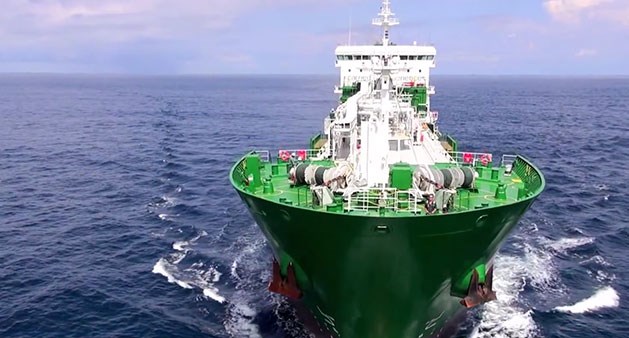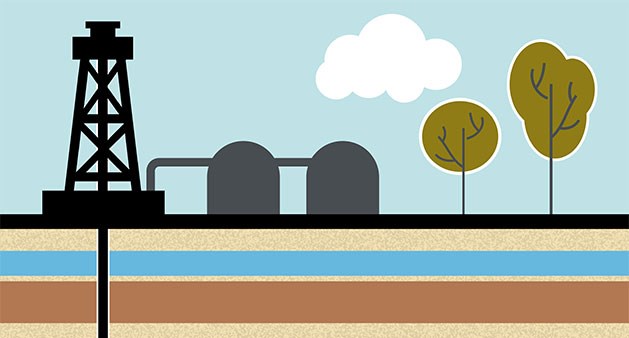Having already clinched game-changing, 15-year deals with America to import its low-cost, shale gas-based ethane, INEOS decided it was time to take a look at how the US did it and what lessons Europe could learn.
Ships, which the world has never seen before, leave America’s shores for the first time next year.
On board each vessel will be thousands of tons of liquefied ethane destined for INEOS’ gas crackers in Europe to help provide raw materials that are running out in the North Sea and to reduce the operating costs of its gas crackers.
Every day 40,000 barrels of shale gas-based ethane, which has been chilled to -140 degrees Fahrenheit, will leave Marcus Hook in Philadelphia for Norway and Scotland in the UK.
“Nobody has ever shipped ethane in these quantities around the world before,” said INEOS chairman Jim Ratcliffe. “These vessels have never been designed before and never crossed the North Atlantic before. This is a world first.”
INEOS needs ethane to make high value petrochemicals but if its businesses in Europe are to remain competitive, it must ship supplies from America, where there are sufficient quantities at competitive prices.
“We are effectively shipping US economics to Europe,” said Jim.
The state-of-the-art ships, currently being built in China, are highly efficient and will have double engines so they can operate in the harshest of conditions. Meanwhile INEOS is building new export facilities in the US and storage tanks at Rafnes and Grangemouth.
The journey across the Atlantic Ocean will begin at Marcus Hook, the site of a former crude oil refinery, which produced gasoline, diesel, and kerosene for more than a century. About 500 people lost their jobs when the loss-making plant was finally shut down in 2011 due to difficult market conditions. Today it is being transformed into a major centre for processing and shipping natural gas liquids thanks to its links with Pennsylvania’s Marcellus shale industry.
“It was a bit of disaster area,” said Tom Crotty, INEOS Corporate Affairs Director. “Much of that town was built around industry with businesses such as the refinery. Jobs depended on it. But suddenly this community, which thought it was dead on its feet, has been brought back to life again, thanks to shale gas.”
Marcus Hook is also where Jim and a team from INEOS began their recent, fact-finding tour of America. INEOS, which has invested in its own team of experts to weigh up the pros and cons of pursuing shale gas exploration in the UK, wanted to see – and understand – how it might work in Europe.
The group spent a day at Marcus Hook before visiting the Barnett shale field in Texas – home of the very first drilled horizontal well.
Explaining how it worked was Nick Steinsberger, described by Tom as the best on-shore gas petroleum engineer in the world.
“A lot of others had dabbled and given up, but Nick worked out how to fracture the rock,” said Tom. “He was the first to use what is called slick water hydraulic fracturing to crack open the Barnett shale field in Texas. He opened the door to the development worldwide. He made the breakthrough.”
Nick worked for Mitchell Energy & Development when with its founder George Mitchell. The company was sold for $3.5 billion in 2002. Today Nick runs his own business.
Nick later escorted INEOS’ delegation to south west Pennsylvania in the Marcellus shale, one of the largest natural gas reserves in the world.
“He wanted us to see it because it is similar to Europe with green, rolling countryside,” said Tom. “And now, there are also a lot of strict regulations in place.”
For Tom, it was an eye-opener.
“One of the public’s biggest concerns is the effect on the countryside,” said Tom. “I had imagined it would be like Texas with nodding donkeys all over the place but in the biggest shale gas area in America, you cannot see anything. There is nothing to be seen, and nothing to be heard. It is just bubbling away like a bottle of pop. The reality is that a single well takes three weeks to drill and one week to fracture, when there is a lot of activity on the site, and then that well can give you gas for anything between 20 and 50 years.”
The UK is currently the only country in the EU to seriously consider fracking.
Gary Haywood, who is leading INEOS’ shale gas project team, said the British Government had recognised that shale gas had the potential to provide the UK with greater energy security, growth and jobs.
“People want an affordable and reliable energy supply,” said Gary. “About 85% of UK homes rely upon gas for heating or cooking, and our indigenous UK supply has now dwindled to less than 50% of our demand. We have a clean energy resource in the UK shale that is ready for development, and this can bring a wide range of benefits to the country. INEOS is keen to be part of this development, and we will be pursuing sensible opportunities to develop shale gas for the company and for the country.”
There are currently more than 176 Petroleum Exploration Development Licences (PEDL) for onshore oil and gas in the UK. More on-shore licences were awarded this year.
Communities and landowners are being offered incentives to allow companies to drill, but INEOS says they do not go far enough.
“We think that communities should share in the benefits if gas is being supplied from under their land,” said Tom. “The offer of £100,000 is not enough to make people think that it’s a great idea so we have announced plans to give 6% of our shale gas revenues to homeowners, landowners and communities close to our wells. We estimate that we will give away over £2.5 billion from our new shale gas business.”
Opposition to fracking in the UK has deepened since the protests at Balcombe in West Sussex last year.
“The drilling in Balcombe provoked some emotional reactions,” said Tom. “But the issue is that people are not generally well informed about shale gas production. The ‘anti’ lobby have whipped up irrational fear of this technology, largely via misleading propaganda.”
Tom and his team are keen to do something about this.
“We’ve produced a short film that tells people the real facts around shale gas production. We want the public to hear the real story,” he said.
Tom says that the film debunks some of the myths around the impact of shale gas production, and also outlines the important benefits that the industry can bring to the UK.
“It is important that people are given all the facts and they can then make an informed decision,” said Tom. “The industry can bring much-needed jobs, and can secure the energy supply for the people of the UK via production of a clean fuel that has half the greenhouse gas impact as coal.”
The other big unknown is how continental Europe will respond.
“I am not sure how long they can ignore this issue,” said Tom. “Some believe the US has shot its bolt and the gas is going to be gone in a few years time but it won’t. We met companies in the US that had only so far drilled less than 10% of their acreage - there is a long-term industry and supply in place via shale gas production in the US. And renewables will not do the job. Gas is the perfect complement to renewable energy because you need a back up. If the wind does not blow, you cannot turn the fridge off.”
INEOS’ 15-year deals with America to import ethane are seen as a stop-gap while Europe makes up its mind.
“It buys us time,” said Tom. “It bridges us for the next 15 years until the point when we hope we are going to have an indigenous UK shale industry which can supply that ethane.”
























